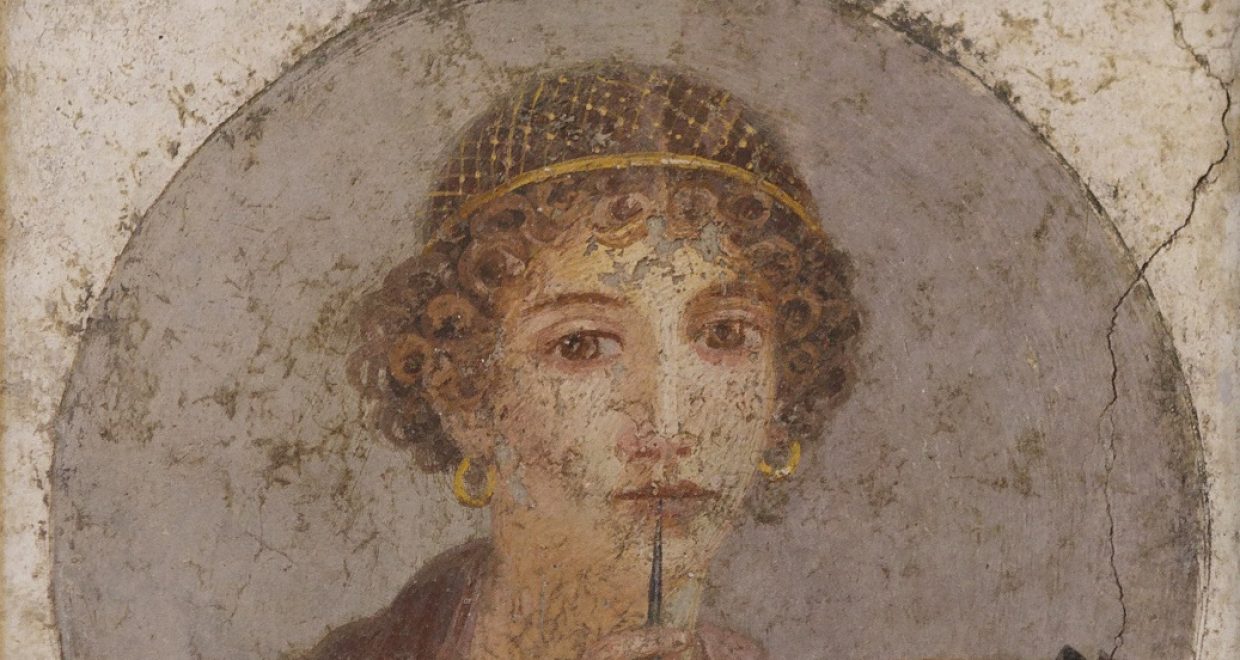On collaboration and a new analysis of Sappho
We have both been writing independently about Sappho for many years, but this article is our first published collaboration. We initially met twenty years ago when Giuliana came to the U.S. for research; while Patricia has yet to visit Sao Paulo, we regularly talk online about our approaches to ancient Greek lyric. For this article, we divided up the research, and traded drafts and revisions back and forth between the U.S. and Brazil. It has turned out to be a very productive collaboration.
So why did we choose to focus on Sappho? Sappho is one of the few female voices to survive from the ancient Greek world; she lived on the island of Lesbos in the 7th c. BCE, and composed lyric poetry for a variety of occasions. While we know little about her world, and have only a fraction of her original creative output, she made a huge impact on later artists and poets, both ancient and modern.
Over time, she was viewed through many lenses: as the leader of a cult of Aphrodite; the quintessential poet of love and desire; a representative of sexual excess or “perversity”, and as a much admired lesbian icon. Today, both academic and non-academic readers continue to be fascinated by her poetry.
The Sappho poem we chose to write about consists of only two lines, describing a bridegroom at his wedding. In Sappho’s other verses, the groom is represented as hyper-masculine, compared to the war god Ares, and teased for his huge size and virility. But in this fragment, the groom is compared to a “delicate branch”. The fragment has not received much attention from scholars, and those who have discussed the piece assume that Sappho was mocking the groom’s delicate size as part of conventional, and sometimes risqué, wedding banter.
Intrigued by the uniqueness of the metaphor, we looked more closely at the technique of comparison (eikasia) and at the plant image of the horpax (“branch”), along with its equivalents – érnos (“sprout”) and thálos (“shoot”). These words are frequently used in epic, lyric, and tragedy in the context of genealogy, when a parent refers with affection to their offspring. But they also appear to signal the ephemerality of mortal life by highlighting the charm and erotic appeal of youth. After exploring the poetic occurrences of these three Greek words for young plants, as well as the adjective brádinos (“delicate”), we returned to Sappho with a clearer sense of her purpose. While she usually inserts traditional elements of the groom’s image (“big”, “strong”, etc.) in her wedding songs, she innovates in this particular fragment. Here, we argue, she chose to represent not a hyper-masculine and dominant groom, but rather one who was young and “delicate”, reflecting habrosune (“delicacy”, “luxury”), a concept that was crucial for much of her verse. This two-line fragment, in our view, describes a beautiful, praiseworthy young groom who is compared to a “delicate branch”, suggesting the brief enjoyment of youthful desire.
‘A DELICATE BRIDEGROOM: HABROSUNĒ IN SAPPHO, FR. 115V: In memory of Milla Ragusa‘ by Patricia Rosenmeyer and Giuliana Ragusa is published in The Classical Quarterly (69/1). Access to the paper is free until the end of April 2020.






